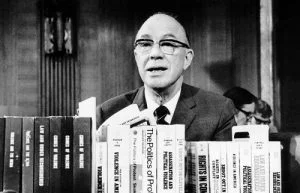The ATF was formerly part of the United States Department of the Treasury, having been formed in 1886 as the “Revenue Laboratory” within the Treasury Department’s Bureau of Internal Revenue. The history of ATF can be subsequently traced to the time of the revenuers or “revenoors”and the Bureau of Prohibition, which was formed as a unit of the Bureau of Internal Revenue in 1920. It was made an independent agency within the Treasury Department in 1927, was transferred to the Justice Department in 1930, and became, briefly, a division of the FBI in 1933. When the Volstead Act, which established Prohibition in the United States, was repealed in December 1933, the Unit was transferred from the Department of Justice back to the Department of the Treasury, where it became the Alcohol Tax Unit (ATU) of the Bureau of Internal Revenue. Special Agent Eliot Ness and several members of The “Untouchables”, who had worked for the Prohibition Bureau while the Volstead Act was still in force, were transferred to the ATU. In 1942, responsibility for enforcing federal firearms laws was given to the ATU.
In the early 1950s, the Bureau of Internal Revenue was renamed “Internal Revenue Service” (IRS),[8] and the ATU was given the additional responsibility of enforcing federal tobacco tax laws. At this time, the name of the ATU was changed to the Alcohol and Tobacco Tax Division (ATTD).
In 1968, with the passage of the Gun Control Act, the agency changed its name again, this time to the Alcohol, Tobacco, and Firearms Division of the IRS and first began to be referred to by the initials “ATF”. In Title XI of the Organized Crime Control Act of 1970, Congress enacted the Explosives Control Act, 18 U.S.C.A. Chapter 40, which provided for close regulation of the explosives industry and designated certain arsons and bombings as federal crimes. The Secretary of the Treasury was made responsible for administering the regulatory aspects of the new law, and was given jurisdiction over criminal violations relating to the regulatory controls. These responsibilities were delegated to the ATF division of the IRS. The Secretary and the Attorney General were given concurrent jurisdiction over arson and bombing offenses. Pub.L. 91-452, 84 Stat. 922, October 15, 1970.
In 1972 ATF was officially established as an independent bureau within the Treasury Department on July 1, 1972, this transferred the responsibilities of the ATF division of the IRS to the new Bureau of Alcohol, Tobacco, and Firearms. Rex D. Davis oversaw the transition, becoming the bureau’s first director, having headed the division since 1970. During his tenure, Davis shepherded the organization into a new era where federal firearms and explosives laws addressing violent crime became the primary mission of the agency.[9] However, taxation and other alcohol issues remained priorities as ATF collected billions of dollars in alcohol and tobacco taxes, and undertook major revisions of the federal wine labeling regulations relating to use of appellations of origin and varietal designations on wine labels.
The BATF was tasked with the regulation of machine guns under the National Firearms Act, or NFA, and overseeing licensed firearm manufacturers, importers and dealers under the Gun Control Act, or GCA. The agency’s mission was to make sure proper paperwork was maintained, taxes and fees were paid, and violations were investigated and served up for prosecution.
By the mid-1970s, the BATF had earned a reputation for being excessively aggressive, nit-picky, vindictive and often unscrupulous. Dozens of stories emerged of ATF abuses, and analysis of their arrest and prosecution records showed that a majority of their cases didn’t involve malevolent criminal activity, but instead targeted ordinary gun owners who were tripped up by confusing regulations and federal red tape
When Neal Knox, head of NRA’s lobbying arm, began waging war on the BATF, he exposed the horror stories, published the records and showed the ruined lives of regular citizens that littered BATF’s wake. In 1979, he convinced Sens. Jim McClure, R-Idaho, and Dennis DeConcini, D-Ariz., to hold hearings on the BATF’s enforcement practices and abuses. In the hearings, Knox made it clear that, while the BATF’s actions were atrocious, the real culprit in the sad saga was the GCA. As he said in his Senate testimony, any agency tasked with enforcing such poorly written laws would be hard pressed not to fall into a similar pattern of abuse.
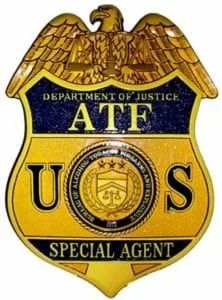 As a direct result of this process of sanitation through sunlight, the ATF received harsh rebukes from Congress and had millions of dollars pulled from its annual budget. President Reagan was actually on the verge of dissolving the agency entirely and turning its enforcement responsibilities over to the FBI. Knox actually opposed that move on the grounds that the real problem was the laws, not who was enforcing them, and that a crippled and scrutinized BATF would be easier to keep in check than the more powerful and respected FBI.
As a direct result of this process of sanitation through sunlight, the ATF received harsh rebukes from Congress and had millions of dollars pulled from its annual budget. President Reagan was actually on the verge of dissolving the agency entirely and turning its enforcement responsibilities over to the FBI. Knox actually opposed that move on the grounds that the real problem was the laws, not who was enforcing them, and that a crippled and scrutinized BATF would be easier to keep in check than the more powerful and respected FBI.
There has been a lot of second-guessing and criticism over that call, but by keeping the focus on BATF as a symptom resulting from bad laws, rather than allowing the agency to be used as a scapegoat, Knox was able to more effectively treat the symptoms, while still going after the underlying disease – the Gun Control Act of 1968.
His primary objective in accepting the leadership position at NRA-ILA was to reform the GCA, removing from the law as many booby-traps and nonsensical restrictions as he could. With this in mind, he and the ILA staff worked closely with the staffs of McClure and Rep. Harold Volkmer, D-Mo., on a sweeping “gun de-control” bill. The bill became known as the Firearm Owner Protection Act, and a somewhat watered-down version of it was finally passed in 1986.
Now, more than 30 years since passage of the McClure-Volkmer Bill, the BATF remains plagued with scandals and accusations of abuse of authority. In 2002, as part of a broad restructuring of federal agencies after the attacks of 9/11, BATF’s enforcement branch was taken out from under the Treasury Department and placed under the Department of Justice alongside the FBI and DEA. The move, which was supposed to help restore the BATF’s sullied reputation, did nothing to slow the chronic mismanagement and abuse. What it has done, however, is highlight the role of the Department of Justice in BATF’s misdeeds.
Like any law enforcement agency, BATF relies on two things to justify its budget requests: threats and results. While it’s easy to paint all sorts of pictures of imminent threats with which to scare Congress into throwing more money at them, BATF must rely on federal prosecutors from the DOJ to validate their results. Elaborate operations and large arrest numbers fall flat when accompanied by very low conviction rates, and that’s exactly what BATF has been producing for decades. But during this time, they have been working with prosecutors to try and turn that around, asking them what types of cases they wanted pursued and what types of evidence they needed to move forward with prosecutions and gain convictions.
In a number of cases, it’s clear that prosecutors
- encouraged the ATF to “bend” evidence,
- cooperated in misrepresenting laws and regulations, and
- conspired with BATF to suppress evidence that could be harmful to the prosecution.
The latest, most blatant case of this involves a lawsuit from one of their own, in which a former agent, who was a principal in an undercover operation to infiltrate the Hells Angels motorcycle club, sued the agency for defamation of character and breach of contract. The judge barred 17 DOJ lawyers from his court and suggested that, along with BATF acting in a vindictive and “Kafkaesque” manner toward its own agent, prosecutors and BATF might have engaged in perjury and fraud upon the court.
BATF and DOJ misdeeds were also apparent in the treatment of Albert Kwan, the Reese family, David Olofson and the notorious Fast and Furious gunwalking scandal.
Under the Obama administration, the ATF attempted to ban common M855 ball ammunition for the AR-15 claiming that the bullet is “armor-piercing.” Factually that was a lie, according to the clear definition of what constitutes an “armor-piercing” bullet as defined in the Law Enforcement Officer’s Protection Act of 1986 (LEOPA). LEOPA’s definition requires the bullet’s core to be made of one of a number of specified hardened metals, and the core of the M855 ball round is soft lead that makes up 80-percent of the bullet’s total weight. The specific goal of the law was to prevent the use of hardened metal bullets with penetrator cores in common handguns, for what was then called “cop killer bullets.” Had the ban not been defeated, the ATF would have had free reign to ban any ammunition, as the actual law seems to matter little to a rogue agency that ignores and redefines laws on a whim.
The pattern is symptomatic of government spiraling out of control with bad laws being enforced and prosecuted by rogue agencies operating without adequate supervision or accountability. And the problem just seems to keep getting worse.
Chronological History of Events Involving the ATF
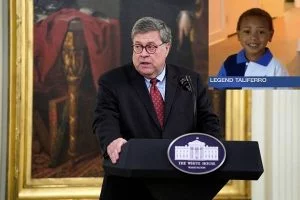
Attorney General William P. Barr Announces Launch of Operation Legend

Las Vegas Route 91 Country Music Festival (Mandalay Bay) Shooting: The Deadliest Mass Shooting in U.S. History Kills 59, Injures 527. A Massive Cover Up.
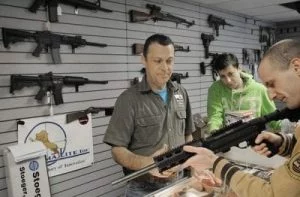
The Milwaukee Journal Sentinel breaks the story of Operation Fearless: An ATF ‘Failed Operation’
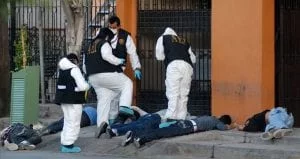
NY Times Breaks that U.S. Agents Launder Mexican Profits of Drug Cartels

Fast and Furious Begins: Secret Government Gun Smuggling Operation

OKC Bombing: An Explosion Devastates the Alfred P. Murrah Federal Building in Oklahoma City – An Inside Job Resulting in the Deaths of 168 People
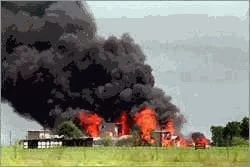
Waco: 95 Innocent Branch Davidians (Including women and children) vs. Delta Force, CIA, FBI, ATF, and British SAS. Guess Who Wins?

Four Former Clinton Bodyguards are Sacrificially Killed to Justify a Large-Scale Retaliation of the Branch Davidians in Waco?

The ATF is Officially Established as an Independent Bureau within the Treasury Department
